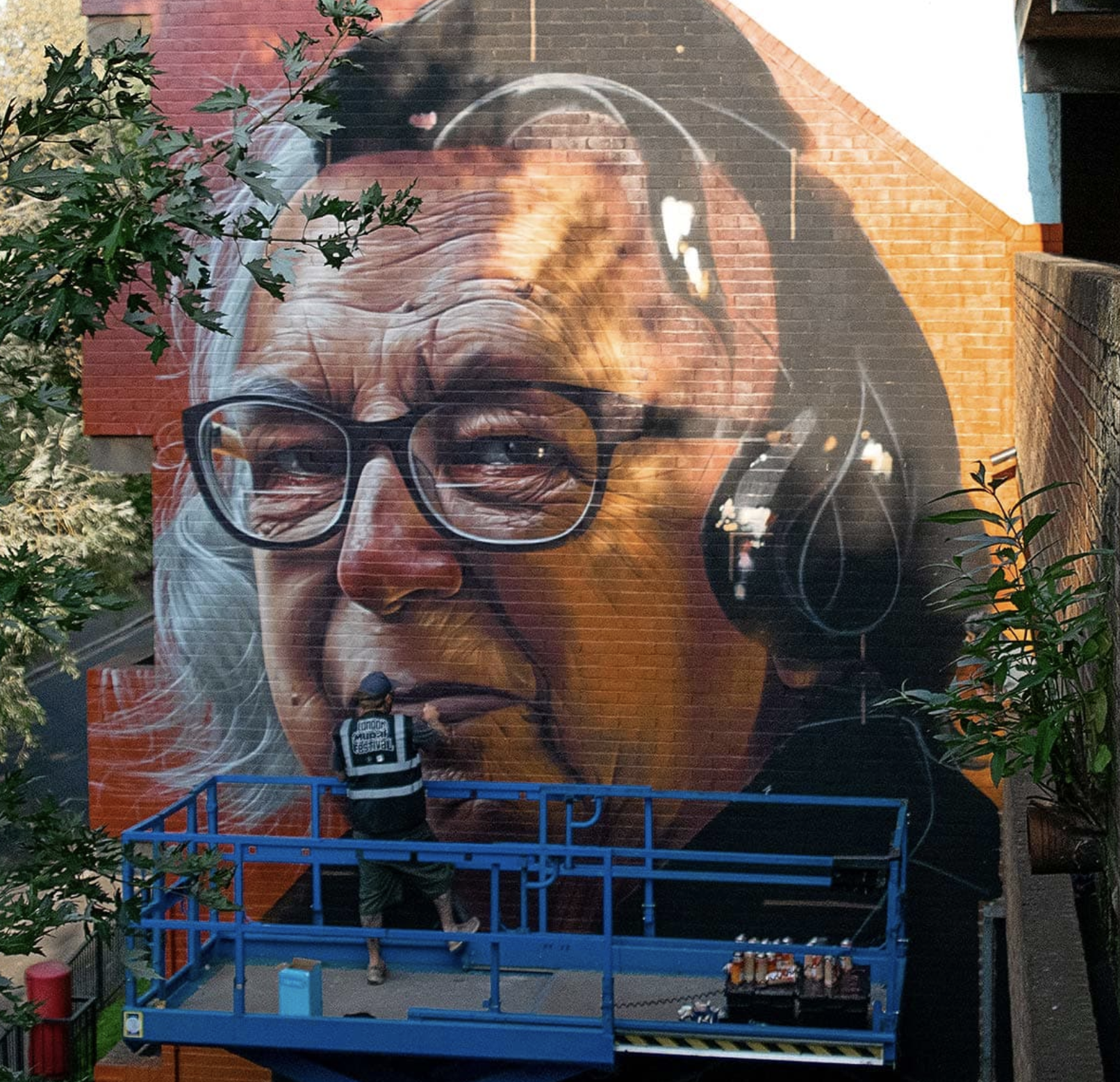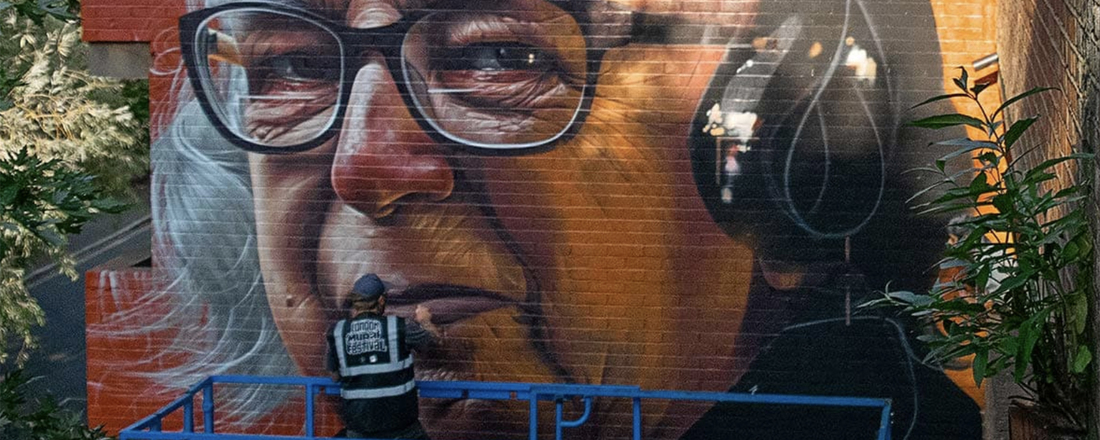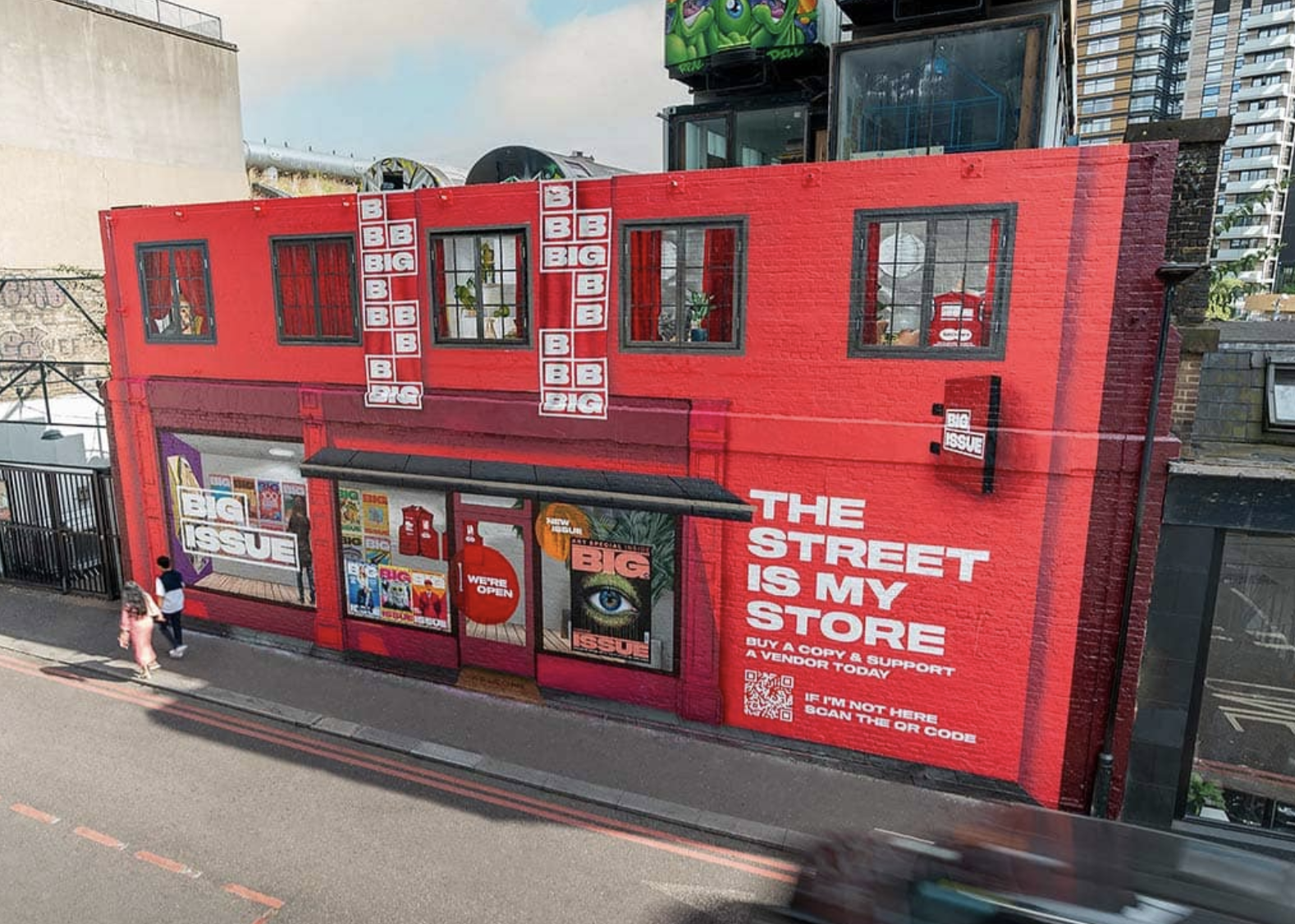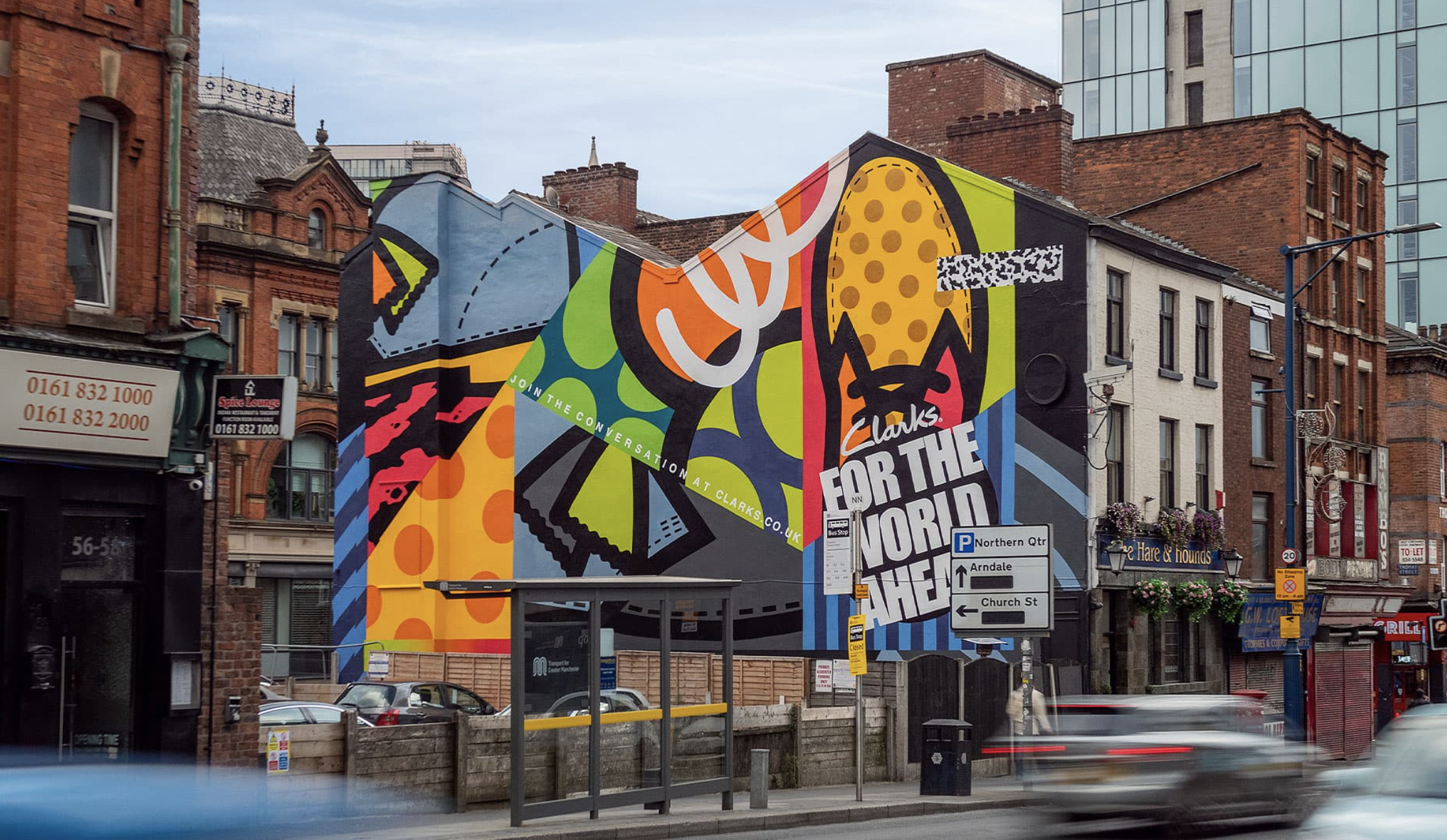Get updates from The Developer straight to your inbox Yes, please!
Painting the town: What street art brings to public spaces
Dr Lee Bofkin, co-founder of Global Street Art and the London Mural Festival on the role of public art and murals in the city

“Street art has got a lot to do with play, and how young people play digitally,” says Dr Lee Bofkin, co-founder of Global Street Art, a consultancy that’s delivered 3,000 murals across the UK and created the Art for Estates programme and London Mural Festival.
I’m interviewing Bofkin for The Developer Podcast, and he’s talking about how young people play by “making content and capturing themselves in public spaces.”
Selfies may not have been formally embraced by the child-friendly city movement, but mobile photography has become a way that developers and business improvement districts encourage engagement.
“Street art provides backgrounds, backdrops and other spaces for creating content. It’s a modern phenomena,” Bofkin explains.
Bofkin was a scientist and a breakdancer before founding Global Street Art, which commissions street artists or uses its own in-house team to deliver hand-painted murals.
Their mission is for everyone to live in painted cities. I ask Bofkin why. His short answer is joy: “There’s a myriad of things that street art, murals and painting can bring to public spaces. A very basic one is colour. People respond to colour emotionally and that can bring a small element of joy into someone’s day.”
“Pure art” is when a wall is offered to an artist with no strings attached
A longer answer includes the fact that murals are just more attractive than the alternative – a run-down wall, outdoor LED display screen or billboard. A big part of Global Street Art’s business is delivering hand-painted advertising and murals on commission, connecting brands such as Camper with street artists to create campaigns.
But the consultancy also facilitates “pure art” commissions, where a wall is offered to an artist with no strings attached. Bofkin believes that many blank walls in the city that would be improved by public art – and murals can be delivered in a reasonable timeframe with minimal upkeep. After all, it’s just paint.
I met Bofkin after Global Street Art sponsored the 2023 Festival of Place, the sister event to The Developer. During the event, a mural was painted on a fake high-street storefront to showcase the speed and quality of what can be produced by the in-house team.
The Art for Estates programme, founded by Global Street Art to create pure art murals on housing estates, arranges for street artists to paint large artworks at no cost to the housing provider. The artist does not seek community approval for the artwork. The wall is a canvas for artistic expression, but Global Street Art will “take a photo and make good” if the mural is deemed problematic. Bofkin says problems are rare. He can only think of one mural that has been removed.
As soon as input and approval is required of the artist, the art piece is a paid commission. Working with communities requires funding too.
As for the distinction between legal and illegal street art, the difference is whether or not the artist has received landowner permission. Bofkin points out that many much-loved pieces of street art were painted without permits. “We do things with permits, some artists don’t. But another distinction that you can make is whether the art is any good or not. Is it pro-social? Does it benefit its local environment or detract from it? That may not be related to its legality at all.”

Bofkin underlines that there are many pieces of street art (Banksy included) that “might not have had original permission but can become a much-loved mural that’s owned by a community later.”
But legal street art does have an advantage over illegal art: With permission comes space and time to work. And it takes time to create a meaningful piece of art at scale.
Bofkin is keen to provide more opportunities for emerging artists to paint in the city. “Artists can make a living from their work, but to get into that industry you do need to lower the barrier of entry for emerging artists, such as legal walls where people can go and practice, learn and experiment. There is no substitute for painting at scale.”
There are 24/7 legal walls in cities such as London, and Bofkin says these are essential spaces to support creative practice. The London Mural Festival also provides opportunities for emerging artists.
“It is really important to provide opportunities for artists to hone their craft, and some of that does look like providing legal walls for people to have a go.”
Property developers can and have been supporting street art with commissions for construction hoardings and on mixed-use sites, with prominent murals recently completed for British Land at Canada Water and Muse in Stockport.
Bofkin says murals can support identity, pride of place and belonging, especially where diverse voices or local culture is represented. “Murals become talking points,” Bofkin says. “They are things that communities can coalesce around, feel and take ownership over.”
Street art culture can also be a sign that the local creative community is thriving and valued. Neighbourhoods in Bristol and London have benefitted from dense clusters of street art, and Bofkin believes that public art calls to public art.
“Not everyone has to like every piece of art to understand that the general concept is good.”
Sign up to The Developer Weekly email to find out when new episodes of The Developer Podcast go live. You can get episodes early and our magazine when you support our podcast on Patreon at www.patreon.com/thedeveloperuk
If you love what we do, support us
Ask your organisation to become a member, buy tickets to our events or support us on Patreon
Sign up to our newsletter
Get updates from The Developer straight to your inbox
Thanks to our organisation members
Become a member
© Festival of Place - Tweak Ltd., 124 City Road, London, EC1V 2NX. Tel: 020 3326 7238


